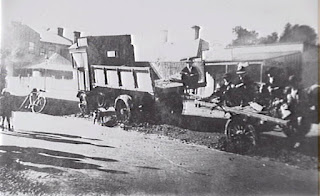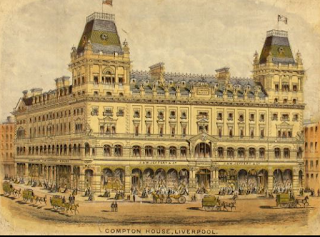Most of us know the story of Frederick Fisher and the events that lead to his murder by George Worrell. The lives of the main characters involved such as Fisher, Worrell and Farley have been well documented. Some of the lesser known contributors to the story however have little information written about them. Two such people are the three young boys who found the blood stains on the fence- the two Rixon brothers and young Burrows.
On 25 October 1826, ten year old Robert Burrows and two of his half brothers Thomas and Henry Rixon, had been fishing in Bow Bowing Creek (can you imagine trying to catch fish in there now! Apparently a fish called a gudgeon was in abundant supply). They elected to take a short-cut back to Appin Road by crossing Fisher's horse paddock. The boys were about to negotiate the fence which separated the farms of Fisher and Worrell when they noticed blood on the fence. The uppermost rail had splashes of blood as big as a hand. The boys raced back to Campbelltown and raised the alarm. Their discovery eventually resulted in the discovery of the hastily buried body of Fred Fisher.
Robert Burrows was baptised on 6 October 1816 at St. Luke's Liverpool. He was the only son of Robert Burrows and Amelia Rixon. His father, Robert Burrows Senior, was a convict who arrived on the Earl Cornwallis in 1801. He married Amelia Rixon in 1816 at St. Luke's and tragically drowned at South Creek on Aspinall's farm at Windsor in 1820. Burrows was Amelia's third partner (she was recognised as married to James Rixon without officially marrying him).
Not much else is known of Robert Junior's life. He married Mary Smith in 1843 when he was aged 27 and died at his residence at Balmain in 1851, aged only 35.
Unlike Robert Burrows, the two Rixon boys involved in the discovery of blood stains, came from a large family. On the front page of the Sydney Gazette of 19 January 1806 it was reported that “On the night of last Sunday Amelia Rixon, the wife of a private in the New South Wales Corps, was safely delivered of three infants, two of whom are living and have a very promising appearance, the third was sadley still born” .The triplets were the first to be born in the colony. The surviving triplets were James and Benjamin. Thomas and Henry were born in 1808 and 1810 respectively. This makes both of them considerably older than their half brother Robert Burrows when the blood stains were located.
Both Thomas and John later served as police constables and appear to have remained in the Campbelltown area. Thomas also worked as a farmer and miller. He died in Campbelltown in 1883 and is buried in St Peter's Cemetery. Henry died the following year. Both had large families and their descendants still live in the region.
One can only imagine how their grisly discovery in 1826 affected them for the rest of their lives. Regardless of how they felt, all three boys played a significant role in the story of one of the world's most famous tales of murder and its apparition.
Written by Andrew Allen













































